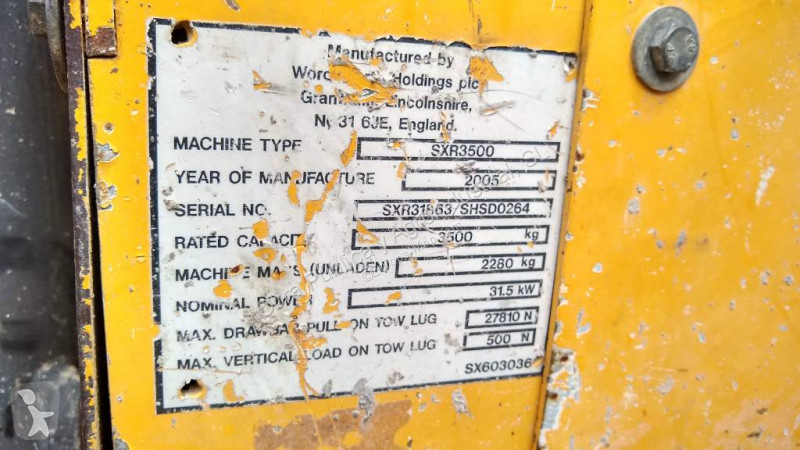
The War Office designated 15 cwt vehicles, such as the MW, as trucks, and larger vehicles as lorries. The MW appeared in a wide range of roles, as a water tanker, general duties truck, personnel carrier, petrol tanker, wireless truck and anti-aircraft gun tractor – among others. This entered service as the MW in 1939, and 65,995 examples had been built by the end of the war in 1945. In 1935, Bedford began the development of a 15 cwt truck for the British War Office. Production of the new range ceased, apart from a few examples made for essential civilian duties, when Bedford went onto a war footing. Because the German armed forces in 1940 were, contrary to their popular image, desperately short of motor transport, many of these captured Bedfords were repaired and pressed into service alongside Opel Blitz (also part of GM) trucks by the German armed forces – although the Bedfords mainly filled second-line roles, including civil defence. Many of the trucks sold by Bedford between June and September 1939 were requisitioned for military use on the outbreak of World War II many were abandoned after the retreat from Dunkirk, rendered useless to the enemy by removing the engine oil drain plug and running the engine. Also on offer was a new 10–12 cwt van, the JC, derived from the new J Model Vauxhall car. The new range consisted of the K (30–40 cwt), MS and ML (2–3 ton), OS and OL (3–4 ton), OS/40 and OL/40 (5 ton) series, and the OB bus.

Mid -1939 saw a complete revamp of Bedfords, with only the HC van continuing in production. The 5–6 cwt HC light van was introduced in 1938, based on the Vauxhall Ten car, and the WT and WS acquired a newly styled grill. In 1935, the WTB bus version appeared, and the WS and VYC models were updated – the latter being redesignated BYC as it was fitted with the engine and synchromesh gearbox of the Big Six Vauxhall cars. A change in design of the WLG produced the WTL, with its cab, internal combustion engine and radiator moved forward to allow a 14 feet (4.3 m) bodylength. Again, a short wheelbase WHT (9 feet 3 inches (2,820 mm)), or long wheelbase WLG (13 feet 1 inch (3,990 mm)) version was offered.
BENFORD DUMPER SERIAL NUMBERS SERIES
The AS series of vans continued in production until 1939.ġ936 Bedford WTL lorry at Amberley Working Museumīedford introduced the 3 ton WT series in November 1933. Bedford continued to develop its share of the light transport market, with the introduction of the 8 cwt ASYC and ASXC vans, a close derivative of the Vauxhall Light Six car. In April 1932, a 30 cwt lorry was introduced, together with a 12 cwt light delivery van, designated as the WS and VYC models respectively. In August 1931, a bus chassis was added to the range, and was designated WHB and WLB.Ī large part of Bedford's original success in breaking into the UK and British Empire markets lay in the overhead-valve (OHV) six-cylinder Chevrolet engine, now known as Chevrolet Stove Bolt 6 – well ahead of its time, this smooth running inline six- cylinder engine formed the basis of Bedford and Vauxhall petrol engines almost until the marque ceased building trucks and buses. However, the Chevrolet LQ and AC continued in production alongside the new product for a further year.

This vehicle, a 2-ton lorry, was virtually indistinguishable from its LQ Chevrolet predecessor, apart from detail styling of the radiator, and was available as the WHG with a 10 feet 11 inches (3,330 mm) wheelbase, or as the WLG with a longer wheelbase of 13 feet 1 inch (3,990 mm). The name "Chevrolet" was dropped, and the first Bedford was produced in April 1931.

The AC was bodied as a light van (12 cwt), and the LQ in a wide variety of roles, including a lorry, ambulance, van and bus versions. The AC and LQ models were produced at Luton from 1929 to 1931, and styled as the "Chevrolet Bedford", taking the name from the county town of Bedfordshire, in which Luton is located. The surviving assets of Bedford, chiefly the van manufacturing plant in Luton, is now owned and operated by Stellantis, following Vauxhall's acquisition by PSA Peugeot Citroën in 2017. The company was a leading international lorry brand, with substantial export sales of light, medium, and heavy lorries throughout the world.īedford's core heavy trucks business was divested by General Motors (GM) as AWD Trucks in 1987, whilst the Bedford brand continued to be used on light commercial vehicles and car-derived vans based on Vauxhall/ Opel, Isuzu and Suzuki designs. Established in April 1931, Bedford Vehicles was set up to build commercial vehicles.

Bedford Vehicles, usually shortened to just Bedford, was a brand of vehicle manufactured by Vauxhall Motors, then a subsidiary of multinational corporation General Motors.


 0 kommentar(er)
0 kommentar(er)
